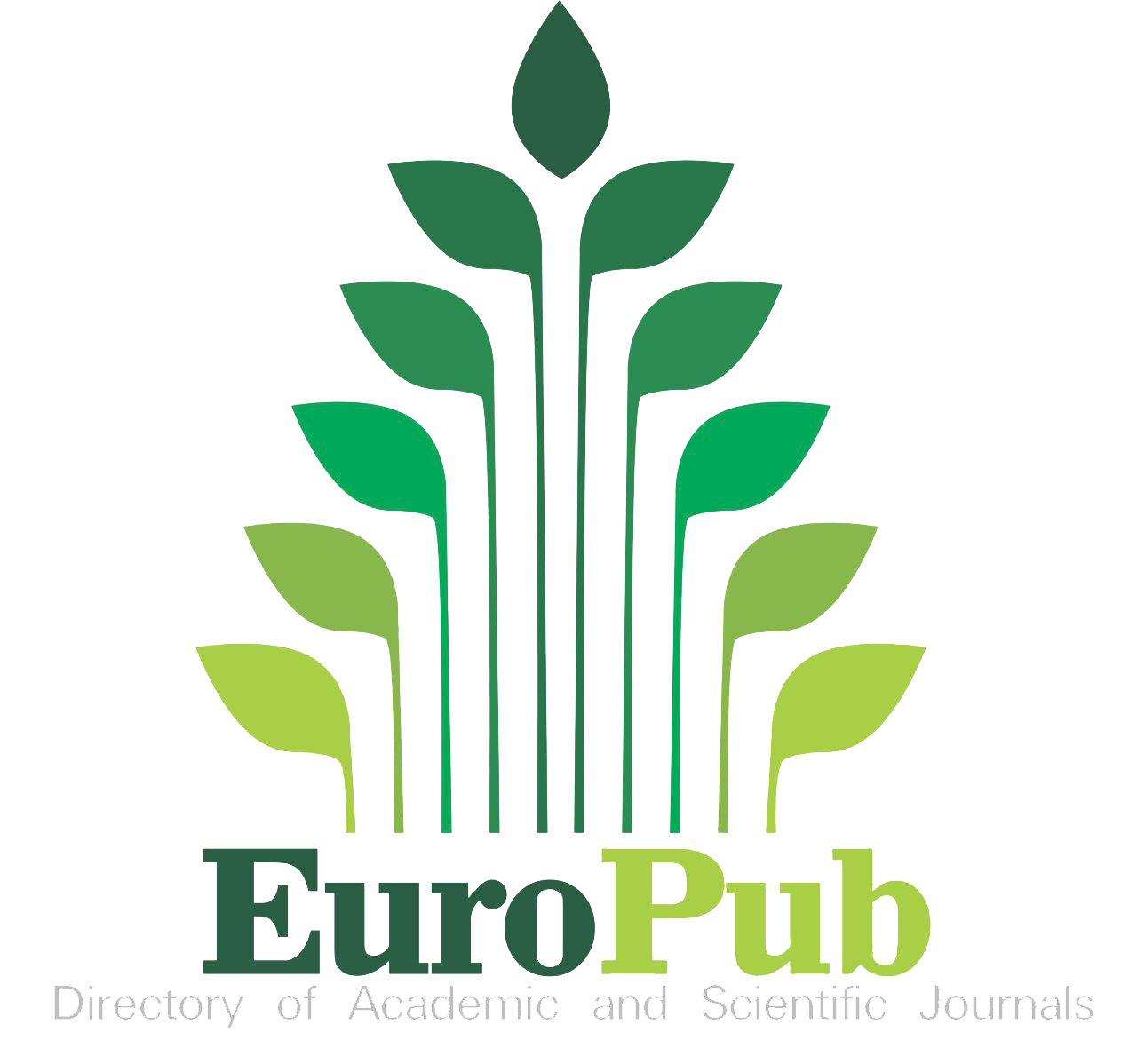Suitability of Grey-water Treated with Common Reed in Constructed Wetland for Irrigation Purposes in Akure, Nigeria
DOI:
https://doi.org/10.54536/ajec.v4i2.4503Keywords:
BOD, Common Reed, Constructed Wetland, Grey-Water, Water TreatmentAbstract
Effective grey-water management plays a crucial role in promoting environmentally sustainable practices. This research focuses on assessing the suitability of grey-water treated with common reed for irrigation purposes in Akure, Nigeria. Grey-water samples were sourced from a university hostel and subjected to treatment through a Constructed Wetland (CW) system, which was planted with common reed (Phragmites australis). The study spanned a three-year period (2016-2018), during which both the physico-chemical and microbial parameters of the raw and treated grey-water were evaluated before and after treatment. The findings revealed notable reductions in the treated grey-water’s physico-chemical and microbial characteristics, thereby indicating the effectiveness of the treatment process. Additionally, the levels of heavy metals in the treated grey-water were significantly reduced, meeting the World Health Organization (WHO) standards for safe use in irrigation. The study highlights the potential of common reed-based constructed wetlands to effectively remove contaminants from grey-water, underscoring their viability as a low-cost, eco-friendly solution for grey-water treatment in Akure, Nigeria, and similar regions. The study also concludes that common reed-treated grey-water can be a viable alternative for irrigation in agricultural settings, contributing to sustainable water management practices in areas like Akure. Consequently, the treated grey-water from this system is deemed safe and suitable for agricultural use, aligning with guidelines for wastewater reuse in irrigation.
Downloads
References
Agarwal, S., & Pandey, V. (2004). Antioxidant enzyme response to NaCl stress in Cassia angustifolia. Biologia Plantarum, 48(4), 555-560.
Aiyelokun, O. O., Olanipekun, A. A., Idusuyi, D. U., Bayode, O., & Saka, Q. O. (2024a). Design and optimization of cascade aerator using AI-Integrated software for Bells university of technology’s water treatment Plant. European Journal of Applied Science and Engineering Technology, 2(5), 118-129.
Aiyelokun, O. O., Olanipekun, A. A., & Agbede, O. A. (2024b). Design and optimization of parshall flume and flash mixer using iNODE software for water treatment plant. Adeleke University Journal of Engineering and Technology, 7(2), 25–37.
Akhtar, A. B. T., Yasar, A., Ali, R., & Irfan, R. (2017). Phytoremediation using aquatic macrophytes. Phytoremediation, +Springer, Cham: 259–276.
Akinbile, C. O., Yusoff, M. S., & Zuki, A. A. (2012). Landfill leachate treatment using sub-surface flow constructed wetland by Cyperus haspan. Waste management, 32(7), 1387-1393.
APHA. (2020). Standard methods for the examination of water and waste water (20th ed., pp. 23–31). Washington, D.C., American Public and Health Association.
Beauclair, N. (2021). Passive treatment of acid mine drainage using an integration of neutralization and a constructed aerobic wetland. Doctoral dissertation, College of Sciences Engineering and Technology, University of South Africa.
Bilha, E., (2006). Biochemical oxygen demand reaction kinetics and mass transfer in horizontal subsurface flow constructed wetland. MSc Dissertation, University of Dar es Salaam, Tanzania.
Brix, H. (1993). Wastewater treatment in constructed wetland system: design, removal processes and treatment performance. In; Moshiri, G. A. (Ed). Constructed Wetland for Water Quality Improvement. CRC press Inc.
Brix, H. (2020). Wastewater treatment in constructed wetlands: system design, removal processes, and treatment performance. In Constructed wetlands for water quality improvement. CRC Press.
Dan, A., Yang, Y., Dai, Y. N., Chen, C. X., Wang, S. Y., & Tao, R. (2013). Removal and factors influencing removal of sulfonamides and trimethoprim from domestic sewage in constructed wetlands. Bioresource technology, 146, 363-370.
Dordio, A., Ferro, R., Teixeira, D., Palace, A. J., Pinto, A. P., & Dias, C. M. (2011). Study on the use of Typha spp. for the phytotreatment of water contaminated with ibuprofen. International Journal of Environmental and Analytical Chemistry, 91(7-8), 654-667.
EPA. (2004). Manual Guidelines for Water Reuse, EPA/625/R-92/004, USA.
FAO. 2003. Hazard analysis and critical control point (haccp) system and guidelines for its application. In Recommended International Code of Practice: General Principles of Food Hygiene (CAC/RCP 1-1969, rev. 4-2003), 21−31.
Gholipour, A., Zahabi, H., & Stefanakis, A.I., (2020). A novel pilot and full scale constructed wetland study for glass industry wastewater treatment. Chemosphere, 247, 125966.
Ghosh, A., & Chakraborty, T. R. (2025). Use of water hyacinth for adaptation to climate change in Bangladesh. American Journal of Environment and Climate, 4(1), 113-118.
Greenaway, M., & Woolley, A. (2001). Changes in plant biomass and nutrient removal over 3 years in a constructed wetland in Cairns, Australia. Water Science and Technology, 44(11-12), 303-310.
Ha, N. T. H., Sakakibara, M., & Sano, S. (2011). Accumulation of indium and other heavy metals by Eleocharis acicularis: an option for phytoremediation and phytomining. Bioresource technology, 102(3), 2228-2234.
Ismail, U. M., Vohra, M. S., & Onaizi, S. A. (2024). Adsorptive removal of heavy metals from aqueous solutions: Progress of adsorbents development and their effectiveness. Environmental Research, 1185-1192.
Kadlec, R. H., & Knight, R. L. (1996). Treatment wetlands. Lewis Publishers, Boca Raton, FL.
Kaseva, M. (2004). Performance of subsurface flow constructed wetland in polishing pre-treated water: A tropical case study. J. Water Research. 38, 681-687.
Kayombo, S., Mbwette, T. S. A., Mayo, A. W., Katima, J. H. Y., & Jorgensen, S. E. (2000). Modelling diurnal variation of dissolved oxygen in waste stabilization ponds. Ecological Modelling, 127(1), 21-31.
Ko, Y. G. (2024). Hybrid method integrating adsorption and chemical precipitation of heavy metal ions on polymeric fiber surfaces for highly efficient water purification. Chemosphere, 142909.
Kumar, J. I. N., H. Soni, Kumar, R. N., & Bhatt, I. (2008). Macrophytes in phytoremediation of heavy metal contaminated water and sediments in Pariyej community reserve, Gujarat, India.Turkish Journal of Fisheries and Aquatic Sciences, 8,193–200.
Kyambadde, J., Kansiime, F., Gumaelius, L., & Dalhammar, G. (2004). A comparative study of Cyperus papyrus and Miscanthidium violaceum-based constructed wetlands for wastewater treatment in a tropical climate. Water Research, 38(2), 475-485.
Li, Y., Lian, J., Wu, B., Zou, H. & Tan, S. K. (2020). Phytoremediation of pharmaceutical contaminated wastewater: Insights into rhizobacterial dynamics related to pollutant degradation mechanisms during plant life cycle. Chemosphere, 253, 126681.
Liu, Y., Naidu, R., & Ming, H. (2011). Red mud as an amendment for pollutants in solid and liquid phases. Geoderma, 163(1-2), 1-12.
Liu, D., Wang, P., Wei, G., Dong, W., & Hui, F. (2013). Removal of algal blooms from freshwater by the coagulation–magnetic separation method. Environmental Science and Pollution Research, 20, 60-65.
Metcalf, & Eddy. (2003). Wastewater engineering: treatment and reuse (4th ed.). McGraw-Hill, New York.
Nakwanit, S., Visoottiviseth, P., Khokiattiwong, S., & Sangchoom, W. (2011). Management of arsenic-accumulated waste from constructed wetland treatment of mountain tap-water. Journal of Hazardous Materials, 185(2-3), 1081-1085.
Napaldet, J. T., & Buot Jr, I. E. (2019). Treatment of Balili River in Benguet, Philippines with constructed wetland planted with dominant local macrophytes. International Journal of Phytoremediation, 21(14), 1463-1473.
Nguyen, T. H., Won, S., Ha, M. G., Nguyen, D. D., & Kang, H. Y. (2021). Bioleaching for environmental remediation of toxic metals and metalloids: A review on soils, sediments, and mine tailings. Chemosphere, 282, 131108.
Oladejo, O.S. (2014). Fundamentals of environmental engineering. Handbook of Environmental Engineering (1st ed.). Olanrewaju Publishers, Ogbomoso, Nigeria.
Oladejo, O. S., & Olanipekun, A. A. (2018). Phyto-remediation of municipal run-off using typha orientalis and sorghum arundinaceum in sub-surface constructed wetland system. International Research Journal of Advanced Engineering and Science, 3(1), 211–215.
Olanipekun, A. A., & Idusuyi, D. U. (2023). Design and construction of bio-sand filtration system for treatment of influent obtained from a well and stream. International Journal of Scientific and Engineering Research, 1(1), 1–15.
Olanipekun, A. A., Idusuyi, D. U., Aiyelokun, O. O., Alao, F., Bayode, O., Saka, Q. O., & Adeyi, A. S. (2024). Effects of anthropogenic activities on the water quality parameters of Iju stream, Ota, Ogun State, Nigeria. European Journal of Science, Innovation and Technology, 4(5), 316-325.
Omami, E. N. (2005). Response of Amaranth to Salinity Stress. PhD Thesis, University of Pretoria, South Africa.
Pescod, M. B. (1992). Wastewater treatment and use in agriculture. FAO Irrig. Drain. Paper. 4, Rome, Italy.
Pongthornpruek, S. (2017). Swine farm wastewater treatment by constructed wetland planted with vetiver grass. Environment & Natural Resources Journal, 15(2), 13-20.
Plaut, Z., Edelstein, M., & Ben-Hur, M. (2013). Overcoming salinity barriers to crop production using traditional methods. Critical Reviews in Plant Sciences, 32(4), 250-291.
Prasetya, A., Prihutami, P., Warisaura, A. D., Fahrurrozi, M., & Petrus, H. T. B. M. (2020). Characteristic of Hg removal using zeolite adsorption and Echinodorus palaefolius phytoremediation in subsurface flow constructed wetland (SSF-CW) model. Journal of Environmental Chemical Engineering, 8(3), 103781.
Reed, S. C. (1993). Subsurface flow constructed wetlands for wastewater treatment. A Technology Assessment, United States Environmental Protection Authority Agency, 832-R-P3-008.
Reed, S. C., Middlebrook, E. J., & Crities, R. W. (1987). Natural system for waste management and treatment. McGraw - Hill, New York.
Saeed, T., & Sun, G. (2013). A lab-scale study of constructed wetlands with sugarcane bagasse and sand media for the treatment of textile wastewater. Bioresource technology, 128, 438-447.
Said, N. S. M., Abdullah, S. R. S., Hasan, H. A., Othman, A. R., & Ismail, N. I. (2021). Endurance of Phragmites karka in removing colour and suspended solids from industrial coffee processing effluents in a continuous reed bed system. Journal of Water Process Engineering, 40, 101832.
Seswoya, R., & Zainal, M. Y. (2010). Subsurface-flow constructed wetland: proposed design area for high strength effluent domestic wastewater. International Conference on Science and Technology Application in Industry & Education, 1-6.
Sijimol, M. R., & Joseph, S. (2021). Constructed wetland systems for greywater treatment and reuse: A review. International Journal of Energy and Water Resources, 5(3), 357–369.
Thathong, V., Tantamsapya, N., Yossapol, C., Liao, C. H., Wirojanagud, W., & Padungthon, S. (2019). Role of Colocasia esculenta L. schott in arsenic removal by a pilot-scale constructed wetland filled with laterite soil. Heliyon, 5(2), e01233.
Tuheteru, F. D., Kusmana, C., Mansur, I., Iskandar, I., & Tuheteru, E. J. (2016). Potential of lonkida (Nauclea orientalis L.) for phytoremediation of acid mined drainage at PT. Bukit Asam Tbk. (Persero), Indonesia.
Vymazal, J. (2011). Constructed wetlands for wastewater treatment: Five decades of experience. Environ. Sci. Technol. 45, 61-69.
Vymazal, J. (2013). Emergent plants used in free water surface constructed wetlands: A review. Ecological Engineering, 61, 582-592.
World Health Organization. (1989). Health guidelines for the use of wastewater in agriculture and aquaculture: report of a WHO scientific group [meeting held in Geneva from 18 to 23 November 1987. World Health Organization.
WHO. (2006). Guideline for the safe use of wastewater, excreta and greywater, Geneva.
Wu, W., Yang, Y., Zhou, H., Ye, T., Huang, Z., Liu, R., & Kuang, Y. (2013). Highly efficient removal of Cu (II) from aqueous solution by using graphene oxide. Water, Air, & Soil Pollution, 224, 1-8.
Xu, D., Lee, L. Y., Lim, F. Y., Lyu, Z., Zhu, H., Ong, S. L., & Hu, J. (2020). Water treatment residual: A critical review of its applications on pollutant removal from stormwater runoff and future perspectives. Journal of environmental management, 259, 109649.
Yadav, A. K., Abbassi, R., Kumar, N., Satya, S., Sreekrishnan, T. R., & Mishra, B. K. (2012). The removal of heavy metals in wetland microcosms: Effects of bed depth, plant species, and metal mobility. Chemical Engineering Journal, 211, 501-507.
Zubair, M., Ihsanullah, I., Aziz, H. A., Ahmad, M. A., & Al-Harthi, M. A. (2021). Sustainable wastewater treatment by biochar/layered double hydroxide composites: Progress, challenges, and outlook. Bioresource technology, 319, 124128.
Downloads
Published
How to Cite
Issue
Section
License
Copyright (c) 2025 Adewoye Alade Olanipekun, Femi Alao, Ajayi Johnson Oloruntade, Oluwatosin Onaopemipo Olofintoye, Afolabi Matthew Oke, Daniel Uwumarogie Idusuyi, Opeyemi Bayode, Quadri Opeyemi Saka, Damilare Akintunde Ojewole

This work is licensed under a Creative Commons Attribution 4.0 International License.








